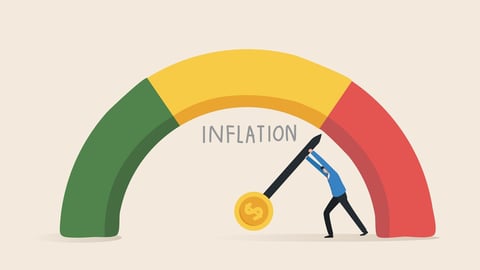As food inflation remains high, consumers adapt: Report
If Canadians became acutely aware of rising food costs in 2022, then 2023 is when they did something about it.
More consumers are reducing their purchases of pricier foods like meat, making the switch to private label brands, and buying more discounted and “Enjoy Tonight” products, according to a new report, “Food Inflation: Where are we now?”, from Dalhousie University and data insights platform Caddle.
The report compares the results of a survey Caddle conducted of Canadians in July 2023 to those of an identical survey it conducted in July 2022. (Both surveys have a margin of error of 1% or lower.)
READ: Decoding Canada's food inflation maze
The answer to the query, “Where are we now?”, is, well, maybe a bit better than 12 months ago.
In July, 90% of Canadians said that food is more expensive than it was three months ago – slightly down from the 92% who said the same when asked that question in July 2022.
Meat continues to be viewed as the most expensive category of food, with 42% of Canadians saying it is more expensive than three months ago. The good news is that’s down from July 2022, when 50% of Canadians said the same.
Some categories, like fruits and bakery products, were found by more Canadians this July to have been increasing in price since last year. Still, fewer Canadians spotted price increases across the majority of products this summer – albeit by a small drop.
READ: Unveiling 'skimpflation': The latest consumer squeeze
While Canada’s inflation rate increased more than expected in July to 3.3%, Sylvain Charlebois, senior director at Agri-Food Analytics Lab at Dalhousie University, says inflation has slowed.
“When you look at annualized rates across the country, we’re at about 3.6% to 3.7% compared to well over 10% a year ago,” notes Charlebois, during a webinar with Colleen Martin, chief revenue officer of Caddle. “So, things are much calmer now than just 12 months ago. It may not seem like it, but conditions are much more manageable.”
Still, Charlebois and Martin agree that the industry needs to do a better job of explaining why food inflation seems to be outpacing general inflation and also explain the reasons for “shrinkflation.”
Shrinkflation is the practice by manufacturers of decreasing product sizes, yet keeping them at the same price as before, or even increasing the cost.
“It’s not new, but it’s an issue a lot of people have noticed because of higher food prices,” says Charlebois. “People are sensitive and they’re looking at all sorts of reasons to understand why prices are higher, and so shrinkflation has attracted a lot of attention.”
That sentiment is borne out in the Caddle surveys, with more Canadians this July than last having noticed a reduction in product size/volume/quantity for a similar price from three months ago across several categories. That includes bakery products (44% versus 39%), meat products (38% versus 29%), dairy products (34% versus 30%), fish and seafoods (28% versus 22%), fruits (29% versus 20%) and vegetables (26% versus 20%).
Pointing out the CBC has been building a database showing all the brands and products that have shrunk over the last 10 years, Charlebois recommends that manufacturers go to greater lengths to address the situation.
“People know about it, it’s out there so might as well just be honest about it,” he urges. “I’m not saying that we should label products that have been shrunk over the last few months or few years, but I think the industry needs to be a little bit more forthcoming about this issue. The industry does not want to be seen as hiding things.”
READ: Amid high inflation and supply chain issues, private label powers up
As far as changed shopping habits, 67% of Canadians said they have reduced their meat purchases in the last three months due to higher prices versus 58% who said the same in July 2022.
They are also buying more store brands/private labels (25% versus 18%), discounted products with expiry/best before dates within a few days of purchase (28% versus 24%) and “Enjoy Tonight” products (21% “much more often” versus 17%).
“We’ve been telling Canadians that ‘best before’ doesn’t mean ‘bad after,’ and that message is resonating with more people,” says Charlebois.



